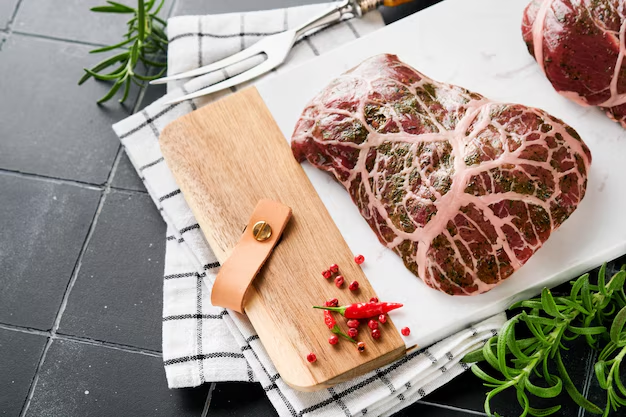How Long Does Leftover Steak Last in the Refrigerator?
Imagine this: you cooked the perfect steak, enjoyed a delicious meal, and placed the leftover steak in the refrigerator, anticipating another round of culinary delight soon. But how long can you let it sit before it becomes a food safety concern? Understanding how to safely store leftover steak is important not only for flavor but also for health.
Preserving the Flavor: The Basics of Refrigerating Steak
Storing leftover steak correctly is crucial to maintaining its taste and ensuring it remains safe to eat. The general consensus is that cooked steak, when properly stored, can last in the refrigerator for about three to four days. This time frame ensures both optimal freshness and safety, minimizing the risk of bacterial growth that could lead to foodborne illness.
Factors Influencing Shelf Life
Several factors can affect how long your leftover steak remains good for consumption:
- Initial Cooking Time and Temperature: Cooking steak to a food-safe internal temperature, typically at least 145°F (63°C) followed by a resting period, reduces the risk of bacterial contamination.
- Storage Conditions: Proper storage involves placing the steak in an airtight container or wrapping it tightly in aluminum foil or plastic wrap to prevent exposure to air, which can cause spoilage.
- Refrigerator Temperature: It's important to store steak at a stable temperature. The refrigerator should be set to 40°F (4°C) or below to delay bacterial growth.
🥡 How to Store Leftover Steak Safely
Now that you recognize the importance of storage, let's break down how to properly store your steak for those three to four days of freshness:
Immediate Action Plan
- Cool Down Promptly: After cooking, let your steak cool to room temperature, but do not leave it out for more than two hours to prevent bacterial growth.
- Wrap It Right: Use airtight containers or wrap the steak tightly to lock in freshness and prevent air exposure.
- Label and Date: To keep track, label your package with the date it was prepared.
Optimizing Storage Techniques
Use Airtight Containers
Utilize containers that provide an airtight seal. This prevents airflow and moisture loss, which can cause the steak to dry out or spoil prematurely.
Double Wrap Strategy
Double wrapping with plastic wrap and then aluminum foil can give an extra layer of protection, ensuring freshness.
Freezing for Extended Storage
If you're unable to consume your leftover steak within the recommended window, freezing is a viable option. Here's how to do it effectively:
- Wrap Effectively: Double wrap with plastic wrap and then aluminum foil or use a vacuum sealer to prevent freezer burn.
- Label Clearly: Mark with the freezing date to monitor storage time.
- Freeze Promptly: Place in the freezer as soon as possible to preserve quality.
When stored correctly, frozen steak can be safe for consumption for up to six months. However, the longer it stays frozen, the higher the chance it may lose some texture or flavor quality.
Signs Your Steak Has Gone Bad
Detecting whether leftover steak is no longer safe involves both sensory observation and a little food intuition.
Visual Cues
- Color Change: Fresh steak should maintain a reddish-brown color. A brown or greenish hue might indicate spoilage.
- Texture: Slimy film on the surface is a clear indicator that bacteria have begun to grow.
Smell Test
- Spoiled steak often emits a sour or rancid odor. If it smells off, it is best to err on the side of caution and discard it.
Taste
- If you notice an off flavor upon tasting, it's best to dispose of the steak immediately without further consumption.
Practical Summary: Your Go-To Checklist for Steak Storage 📝
Here’s a quick checklist to ensure your steak remains safe:
- Cool and Store: Let steak cool no more than two hours before refrigerating.
- Seal Properly: Use airtight containers or double-wrap with plastic and foil.
- Label and Date: Keep track of how long it's been stored.
- Observe for Spoilage: Dilute any sensory changes—look, smell, taste.
- Freezing Option: Store safely in the freezer for longer shelf life.
Expert Tips for Reheating Leftover Steak
When it comes time to enjoy your steak leftovers, reheating is key to preserving flavor and ensuring it remains safe to eat:
Methods for Reheat Success
Oven Reheating: Set your oven to a low temperature, around 250°F (120°C), and place the steak on a wire rack over a baking sheet. This gentle method ensures even heating without overcooking.
Skillet Warm-Up: A quick sear in a hot pan can revive both texture and flavor, especially if you love that crisp exterior.
Sous Vide Style: For a tech-savvy approach, sous vide reheating keeps the steak moist by gently bringing it to temperature in a hot water bath.
General Reheating Advice
- Avoid Microwaving: Microwaving can unevenly heat the steak, potentially leading to tough or rubbery texture.
- Monitor Heating: Keep a close eye to prevent overcooking, as reheating to an internal temperature of 165°F (74°C) is generally recommended.
Debunking Myths: Common Misconceptions about Leftover Steak Storage
While retention of flavor is essential, so is avoiding misconceptions:
Myth: "Steak is safe as long as it doesn't smell bad." Even if the steak doesn't smell off, it may still harbor bacteria; therefore, adhering to the recommended storage duration is best practice.
Myth: "Freezing kills all bacteria." Freezing slows but does not kill, bacteria. Proper cooking post-thawing ensures safety.
Concluding Insights
Storing leftover steak properly in the refrigerator involves understanding the balance of time, temperature, and food safety. By following these best practices, your dining experience remains delicious and safe. Food storage isn't just about preventing waste but ensuring every meal you reheat is as enjoyable and nutritious as it was the first time. By mastering the art of food storage, you empower your culinary repertoire with both safety and flavor preservation. Bon appétit! 🍽️
